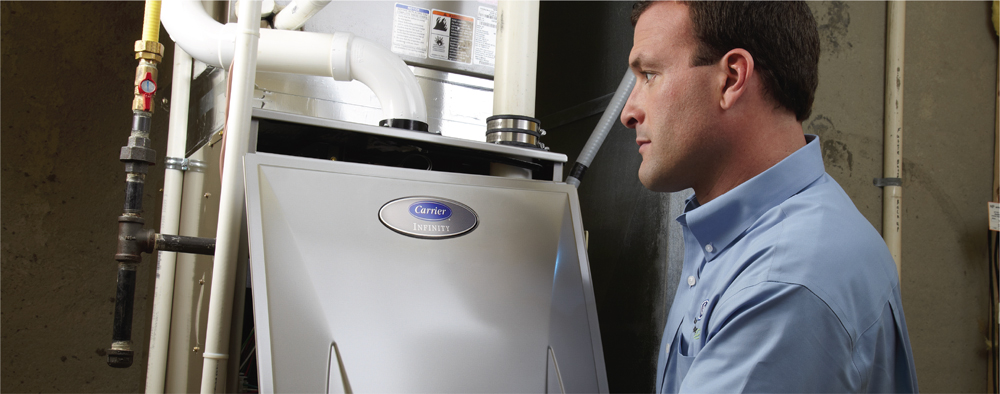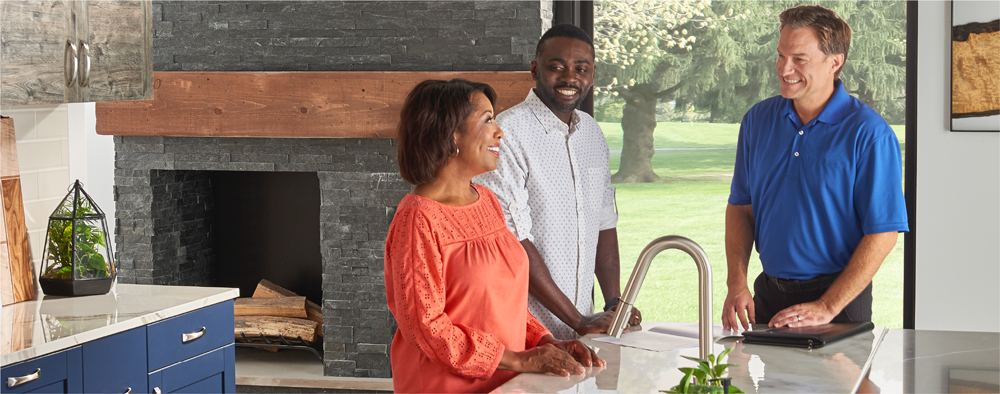Welcome to our comprehensive guide on HVAC services. We hope to be a helpful resource to help you understand the world of heating, ventilation, and air conditioning. Whether you’re seeking to maintain the perfect home climate, want to improve indoor air quality, require urgent repairs, a full replacement of your system, or new home design and installation, this guide will provide you with insightful, actionable information on heating and cooling services to help you make informed decisions, maintain a comfortable home environment, and ensure the air you breathe is clean and healthy.
MAINTENANCE


Purchase a one-year preventive maintenance agreement & get a second year FREE!*
*$200 Value, New Customers Only
HVAC Maintenance
HVAC maintenance is crucial to ensuring the comfort and air quality of any indoor environment, whether it’s a home, office, or commercial space. Regular upkeep not only guarantees the efficient operation of your heating and cooling system but also prolongs its lifespan, saving you from costly repairs or replacements down theline. Understanding the importance of HVAC maintenance and implementing a consistent routine can lead to significant long-term benefits, including energy savings, improved air quality, and the avoiding emergency breakdowns.
UNDERSTANDING THE IMPORTANCE OF MAINTENANCE
Energy Efficiency: One of the primary benefits of regular HVAC maintenance is improved energy efficiency. A well-maintained system uses less energy to heat or cool your space, lowering utility bills. During maintenance checks, technicians ensure that the system runs optimally by cleaning or replacing air filters, inspecting ductwork for leaks, and ensuring that all components are in good working order.
Extended System Lifespan: HVAC systems are significant investments for any property owner. Regular maintenance extends the life of your system by preventing wear and tear on its components. Technicians can identify and address minor issues before they become major problems, ensuring that your system runs smoothly for as long as possible.
Improved Air Quality: HVAC systems circulate air throughout your space, and without proper maintenance, theycan spread dust, pollen, and other allergens. Regular cleaning of filters and ducts reduces the amount of theseirritants in the air, improving indoor air quality and contributing to a healthier living or working environment.
Prevention of Emergency Breakdowns: Perhaps one of the most significant benefits of regular HVAC maintenance is the prevention of unexpected and often costly breakdowns. Maintenance visits allow technicians to spot potential issues and fix them before they lead to a system failure, ensuring that your HVAC system is reliable no matter the season.
KEY COMPONENTS OF HVAC MAINTENANCE
Air Filter Replacement: One of the simplest yet most effective maintenance tasks is replacing or cleaning the HVAC air filters. Dirty filters restrict airflow, reducing efficiency and potentially leading to system malfunctions. Check filters monthly and replace or clean them as needed.
Coil Cleaning: The evaporator and condenser coils in your HVAC system can accumulate dirt over time, impairing the system’s ability to absorb and release heat. Annual cleaning of these coils is essential for maintaining your system’s efficiency.
Duct Inspection and Cleaning: Leaky or dirty ducts can significantly impact the performance of your HVAC system. Regular inspections can identify leaks or blockages, and cleaning ensures that air flows freely, improving efficiency and air quality.
Thermostat Check: Ensuring your thermostat functions correctly can save you money and improve comfort. Technicians will check the calibration of your thermostat and can recommend programmable or smart thermostats for better energy management.
Professional Inspections: While homeowner can perform some maintenance tasks, such as changing filters, a professional inspection should be conducted at least once a year. These inspections can cover areas not accessible or identifiable by the average person, such as checking refrigerant levels, inspecting electrical connections, and ensuring all mechanical components are in good working order.
Repairs


Customers with a Precision Comfort Systems Preventive Maintenance agreement go to the front of the line for repairs & may save money too!
AIR CONDITIONER REPAIRS
Air conditioner repairs can be necessary to maintain a comfortable and healthy living environment, especially during the peak of summer when temperatures soar. The complexity of modern air conditioning systems means that a range of issues can arise, affecting efficiency, performance, and even the safety of your home.Understanding the common repairs, their signs, and the importance of timely intervention can save homeowners time, money, and discomfort.
RECOGNIZING THE SIGNS OF NEEDED REPAIRS
The first step in managing air conditioner repairs is recognizing the signs that your unit may need attention. Common indicators include unusual noises, such as grinding or squealing, which can signal motor or belt issues. Reduced cooling capacity, uneven cooling, or warm air blowing from the unit can indicate refrigerant leaks, clogged filters, or problems with the compressor. Increased energy bills may also suggest that your air conditioner works harder than normal to maintain the desired temperature, possibly due to a malfunctioning part or a refrigerant leak.
COMMON AIR CONDITIONER REPAIRS
Refrigerant Leaks: The refrigerant is what your air conditioner uses to remove heat and humidity from the air. If the system develops leaks, it can’t cool effectively. Repairing a leak involves finding and sealing the leak points and then recharging the system with refrigerant.
Drainage Problems: The condensate drain can become clogged with algae, dirt, or other debris, leading to water damage and increased humidity levels. Clearing the drain is a common repair that restores proper function.
Electrical Control Failure: The compressor and fan controls can wear out over time, especially when the air conditioner turns on and off frequently. Electrical connections and contacts must be checked and repaired as part of routine maintenance to prevent this issue.
Unresponsive Thermostat: Sometimes, the thermostat may not respond when you try to change settings or turn the air conditioner on or off. This could be due to dead batteries, loose wiring, or a faulty thermostat. An unresponsive thermostat requires a professional diagnosis to determine the exact cause and perform the necessary repairs or replacement.
Dirty Filters or Coils: Dirty filters restrict airflow and can cause the system to freeze up. Similarly, dirty condenser coils hinder the air conditioner’s ability to expel heat outside. Cleaning or replacing filters and cleaning the coils are common repairs that significantly improve efficiency.
THE IMPORTANCE OF TIMELY REPAIRS
Delaying repairs can lead to more significant problems, including complete system failure, which can be much more costly to address than initial repairs. Timely intervention not only saves money but also prolongs the air conditioner’s life, ensuring it operates at peak efficiency. Moreover, some issues, like refrigerant leaks, can pose environmental hazards, while others, such as electrical problems, can present safety risks.
FURNACE REPAIRS
Furnace repairs are integral to home maintenance, crucial for ensuring a warm, safe, and comfortable environment during the colder months. As furnaces age or are subjected to continuous use, they may encounter issues requiring professional attention. Understanding the signs of furnace problems, common repair needs, and preventative measures can significantly impact your home’s warmth and safety while potentially saving on costly repairs or replacements.
RECOGNIZING THE SIGNS OF NEEDED REPAIRS
Several indicators suggest your furnace may require repairs. These include inadequate heating, unusual noises (such as banging, whistling, or groaning), frequent cycling (turning on and off), the smell of gas or other odd odors, and an unexpected rise in energy bills. Recognizing these signs early can prevent minor issues from escalating into major problems, ensuring the longevity and efficiency of your furnace.
COMMON FURNACE REPAIRS
Ignition or Pilot Control Problems: faulty ignition or pilot can make it difficult to heat a home efficiently. Modern furnaces use electronic ignition systems, which can require adjustments or replacements to function correctly.
Wear and Tear on Mechanical Parts: Furnaces contain various mechanical parts, such as belts and bearings, that can wear out over time, leading to airflow problems, overheating, or poor heating control.
Thermostat Malfunctions: The thermostat controls the temperature of your home by regulating the heat output of the furnace. A malfunctioning thermostat can lead to no heat, intermittent heat, or fan issues.
Clogged or Dirty Filters: One of the most common and easily remedied furnace problems is a clogged or dirty air filter, which can restrict airflow and force the furnace to work harder, leading to increased wear and potentially overheating.
Cracked Heat Exchanger: A cracked heat exchanger can release carbon monoxide into your home, posing significant health and safety risks. This issue requires immediate attention from a professional.
Leaking or Blocked Ducts: Leaking or blocked ducts can reduce your furnace’s efficiency, leading to higher energy costs and uneven heating throughout your home.
THE IMPORTANCE OF PROFESSIONAL REPAIRS
While homeowners can handle some furnace issues, like replacing a dirty filter, most repairs should be conducted by experienced professionals. Furnaces are complex machines that use combustible materials to create heat, posing potential safety risks if improperly handled. Professional HVAC technicians have the training, tools, and experience to diagnose and repair furnace issues safely and effectively, ensuring your system operates efficiently and safely.
HEAT PUMP REPAIRS
Heat pump repairs are essential for maintaining the efficiency and longevity of this dual-function system that provides both heating and cooling to your home. As an integral component of your home’s HVAC system, understanding the nuances of heat pump operation, recognizing signs of malfunction, and knowing how to address common issues can ensure your unit operates optimally year-round.
RECOGNIZING THE SIGNS OF NEEDED REPAIRS
The first step in maintaining your heat pump is recognizing the signs that indicate a need for repair. Common indicators include:
Inadequate Heating or Cooling: If the heat pump fails to maintain the desired temperature, it may indicate issues such as low refrigerant levels, compressor problems, or malfunctioning thermostats.
Unusual Noises: Sounds like grinding, squeaking, or rattling can signal mechanical issues within the unit, such as loose components or motor bearing problems.
Short Cycling: Frequent turning on and off of the heat pump might suggest thermostat issues, incorrect sizing, or electrical problems.
Increased Energy Bills: A sudden spike in energy consumption can indicate the heat pump is operating inefficiently, possibly due to leaks, blockages, or mechanical wear and tear.
Ice Formation: Some frost or light ice formation on the coils is common during the heating season, but should go away after a defrost cycle. However, a large buildup of ice on the coils can be a sign of airflow issues, refrigerant leaks, or malfunctioning defrost cycles.
COMMON HEAT PUMP REPAIRS
Refrigerant Leaks: A heat pump relies on refrigerant to transfer heat. Leaks can reduce efficiency and the ability to heat or cool. Repairing leaks and recharging the system requires a professional technician.
Compressor Issues: The compressor is the heart of the heat pump, circulating refrigerant between indoor and outdoor units. Overheating, electrical failures, or mechanical issues can necessitate repairs or replacement.
Faulty Thermostats: Thermostats regulate the heat pump’s operation. Incorrect readings or malfunctions can lead to inefficiency and discomfort. Calibration or replacement might be needed.
Electrical Failures: Wiring issues, faulty capacitors, or malfunctioning control boards can affect the heat pump’s performance. Experienced professionals should always conduct electrical repairs to ensure safety and effectiveness.
Defrost Issues: In colder weather, heat pumps may need to defrost to prevent ice buildup. Malfunctions in the defrost cycle can lead to poor performance and potential damage.
THE IMPORTANCE OF PROFESSIONAL REPAIRS
While basic maintenance tasks can be performed by homeowners, like cleaning filters and ensuring clear airflow around units, most heat pump repairs require the expertise of a professional. Certified HVAC technicians have the necessary knowledge, tools, and experience to diagnose and safely repair heat pumps, addressing the system’s electrical and mechanical components. Professional repairs ensure the job is done correctly, safeguarding the system’s efficiency and your home’s comfort.
REPLACEMENT


Our experts will analyze your needs and make recommendations based on your budget and preferences to ensure your comfort with your choices and us.
AIR CONDITIONER REPLACEMENT
Replacing an air conditioner is a significant home improvement decision that affects your immediate comfort and has long-term implications for your home’s energy efficiency and value. Given the advancements in technology and shifts towards more energy-efficient and environmentally friendly options, replacing an air conditioner involves carefully considering various factors, including timing, cost, and selecting a new unit.
RECOGNIZING THE SIGNS OF NEEDED REPLACEMENT
The decision to replace an air conditioner usually comes down to a few key indicators. Age is a primary factor; most air conditioners have a lifespan of 10 to 15 years. As a unit ages, its efficiency can significantly decrease, leading to higher energy bills and more frequent repairs. Performance issues, such as inadequate cooling, inconsistent room temperatures, or excessive noise, can signal that it’s time for a replacement. Moreover, if your current system uses R-22 refrigerant (Freon) or R-410A, which are being phased out due to environmental concerns, upgrading to a new system becomes a matter of efficiency and environmental responsibility.
CONSIDERATIONS FOR AIR CONDITIONER REPLACEMENT
When planning for an air conditioner replacement, consider the following factors to ensure you make the best decision for your home:
Sizing: Proper sizing is crucial. An oversized or undersized unit can lead to inefficiency, uneven cooling, and increased wear and tear.
Type of System: Depending on your home’s layout and your climate control needs, you might choose between central air conditioner or heat pumps.
Energy Efficiency: Look for units with a high SEER (Seasonal Energy Efficiency Ratio) rating. Though more efficient units can be more expensive upfront, they can offer significant savings over time.
Cost: Beyond the purchase price, consider installation costs and potential savings from rebates or tax incentives for energy-efficient systems.
Professional Installation: Choosing the right contractor for installation is as important as selecting the unit. Proper installation is key to ensuring the unit’s efficiency and reliability.
Ultimately, the decision to replace an air conditioner should be informed by a combination of factors, including the age and condition of your current unit, your energy usage and costs, and your goals for home comfort and environmental impact. Consulting with HVAC professionals can provide valuable insights into the latest options and help you navigate the complexities of choosing and installing a new air conditioning system. With careful planning and consideration, replacing your air conditioner can be an investment that pays off in increased comfort, lower energy bills, and a more sustainable home environment.
FURNACE REPLACEMENT
Replacing a furnace is a significant decision for any homeowner, not only because of the immediate cost implications but also due to the long-term impact on comfort, energy efficiency, and household expenses. As a central component of a home’s heating system, the furnace plays a crucial role in maintaining a warm and comfortable environment during the colder months.
RECOGNIZING THE SIGNS OF NEEDED REPLACEMENT
The decision to replace a furnace often comes down to a few critical factors: age, efficiency, and the cost of repairs. Most furnaces have a lifespan of 15 to 20 years. If your furnace is nearing or has surpassed this age range, it’s wise to consider replacement, especially if you’re noticing a decline in heating efficiency or an increase in repair needs. Similarly, if your furnace requires frequent repairs, the cost of these repairs can quickly add up, making replacement a more economically sound choice. Moreover, modern furnaces are significantly more energy-efficient than older models. Upgrading to a new furnace can reduce energy bills and contribute to a more environmentally friendly heating solution.
CONSIDERATIONS FOR FURNACE REPLACEMENT
Efficiency and Type
Energy efficiency is among the top considerations when selecting a new furnace. The Annual Fuel Utilization Efficiency (AFUE) rating measures a furnace’s efficiency in converting fuel to heat. Modern furnaces can have AFUE ratings of up to 98%, meaning they efficiently convert nearly all the fuel to useful heat. Opting for a high-efficiency furnace can result in substantial savings on energy bills over the furnace’s lifespan.
Additionally, the type of furnace is another essential consideration. Furnaces can be powered by natural gas, electricity, or oil, with each type having its own set of advantages and drawbacks in terms of cost, availability, and environmental impact. Your choice will likely be influenced by the fuel sources readily available in your area and your personal preferences regarding energy use and sustainability.
Size and Installation
Choosing the right size furnace for your home is crucial to ensure efficient operation. A too large furnace will cycle on and off more frequently, which can cause wear and tear on components and lead to uneven heating. Conversely, a furnace that’s too small won’t be able to heat your home adequately. A professional HVAC contractor can perform a load calculation to determine the correct size furnace needed based on your home’s size, layout, insulation levels, and climate.
Proper installation is just as important as selecting the right furnace. An improperly installed furnace can operate inefficiently, undermining the benefits of choosing a high-efficiency model. Therefore, it’s essential to hire a reputable and experienced HVAC contractor who can ensure that your new furnace is installed correctly and optimally configured for your home’s heating needs.
HEAT PUMP REPLACEMENT
Heat pumps serve a dual purpose: heating in the winter and cooling in the summer, making them an integral component of your home’s HVAC system. Their dual function of providing heating and cooling means they can be used for a more significant part of the year, especially in climates with mild winters and hot summers. This year-round operation can lead to more wear and tear than systems used seasonally, potentially shortening their lifespan. With technological advancements, modern heat pumps offer superior efficiency, reduced energy consumption, and enhanced environmental friendliness compared to older models.
RECOGNIZING THE SIGNS OF NEEDED REPLACEMENT
The decision to replace a heat pump typically stems from several factors: age, efficiency, and the cost of ongoing repairs. Heat pumps generally have a lifespan of 10 to 15 years. If your unit is within this age range and experiencing frequent breakdowns or requiring costly repairs, it might be more economical in the long run to invest in a new system.
Older heat pumps may operate less efficiently, leading to higher energy bills. An increase in your home’s energy consumption or a noticeable decline in comfort levels could indicate that your heat pump is no longer performing effectively.
CONSIDERATIONS FOR HEAT PUMP REPLACEMENT
Energy Efficiency and Environmental Impact
One of the most crucial considerations when choosing a new heat pump is energy efficiency. The efficiency of heat pumps is measured by the Seasonal Energy Efficiency Ratio (SEER) for cooling and the Heating Seasonal Performance Factor (HSPF) for heating. Higher SEER and HSPF ratings signify more efficient energy use, resulting in lower utility bills and a smaller carbon footprint. Modern heat pumps can have SEER ratings well above 20 and HSPF ratings above 10, making them significantly more efficient than older units.
Selecting the right type of heat pump is also essential. There are several types: air-source, ground-source (also known as geothermal), and water-source heat pumps. Each has its advantages and ideal use cases depending on your geographic location, property size, and specific heating and cooling needs. For instance, geothermal heat pumps offer unparalleled efficiency but come with higher upfront installation costs and may not be feasible for all property locations.
Sizing and Professional Installation
Proper sizing and installation ensure your new heat pump operates efficiently. A too large unit will cycle on and off too frequently, reducing efficiency and lifespan. At the same time, a unit that is too small will struggle to maintain comfortable temperatures, particularly during extreme weather. An HVAC professional can conduct a detailed home assessment to determine the appropriate size for your new heat pump, considering factors such as square footage, insulation quality, window types, and local climate.
Moreover, professional installation is paramount. A well-installed heat pump will operate at its peak efficiency, providing reliable heating and cooling while minimizing energy costs. It’s important to hire a reputable HVAC contractor with experience in heat pump installation to ensure that your new system is installed correctly and configured to meet your home’s specific needs.
INDOOR AIR QUALITY


Our comfort specialist will listen and make air quality improvement recommendations based on your situation..
INDOOR AIR QUALITY SERVICES
Indoor air quality (IAQ) has increasingly become a focal point of concern for businesses, healthcare facilities, and homeowners alike. With people spending a significant amount of time indoors, the quality of the air within our homes and workplaces directly impacts our health, comfort, and productivity. Poor IAQ can contribute to a wide range of health issues, from allergies and asthma to more serious respiratory conditions. Consequently, maintaining or improving indoor air quality through various services and interventions has become critical to ensuring a safe and healthy indoor environment
Understanding Indoor Air Quality
Indoor air quality refers to the air quality within and around buildings and structures, especially concerning the health and comfort of building occupants. Microscopic contaminants can affect IAQ, including molds, bacteria, pollen, viruses, pet dander, and particles released from building materials and furnishings. Volatile organic compounds (VOCs) emitted from paints, cleaning supplies, and other household products can also deteriorate indoor air quality. Furthermore, inadequate ventilation can increase indoor pollutant levels by not bringing in enough outdoor air to dilute emissions from indoor sources and not carrying indoor air pollutants out of the area
SERVICES TO IMPROVE INDOOR AIR QUALITY
Various services and solutions are available, focusing on assessing, mitigating, and continuously monitoring IAQ to address these issues. These services are essential for identifying the root causes of poor air quality and implementing effective strategies to address them.
Air Quality Assessments and Testing: Professional IAQ assessments are the first step in understanding the issues affecting a building’s air quality. These assessments can identify the types and concentrations of pollutants present. Testing may involve measuring levels of various pollutants, including VOCs, particulate matter, and radon. The results can help determine the necessary actions to improve the indoor environment.
Ventilation Improvements: Enhancing the building’s ventilation system is essential for improving IAQ. Ventilation improvement may involve the installation of advanced ventilation technologies, such as energy recovery ventilators (ERVs) or heat recovery ventilators (HRVs), which efficiently exchange indoor and outdoor air while conserving energy. Proper ventilation helps reduce pollutant levels by bringing in fresh outdoor air and expelling stale indoor air.
Air Purification Systems: Installing air purifiers is another effective way to improve IAQ. These systems use filters, UV light, or other technologies to remove pollutants from the air. High-efficiency particulate air (HEPA) filters are particularly effective at capturing microscopic particles, including pollen, pet dander, and dust mites.
Humidity Control: Maintaining optimal indoor humidity levels (typically between 30% and 50%) can help prevent the growth of mold and mildew, which are common sources of indoor air pollutants. Dehumidifiers and humidifiers can control humidity levels depending on the climate and indoor conditions.
Source Control: This involves eliminating or reducing the sources of pollutants. It can include using low-VOC materials in building and decorating, ensuring proper storage and disposal of chemicals, and regular cleaning and maintenance to minimize dust and mold.
Continuous Monitoring: Modern technology now allows for continuous indoor air quality monitoring through smart IAQ monitors. These devices can track levels of various pollutants in real time, providing valuable data that can help adjust strategies for maintaining healthy indoor air.
